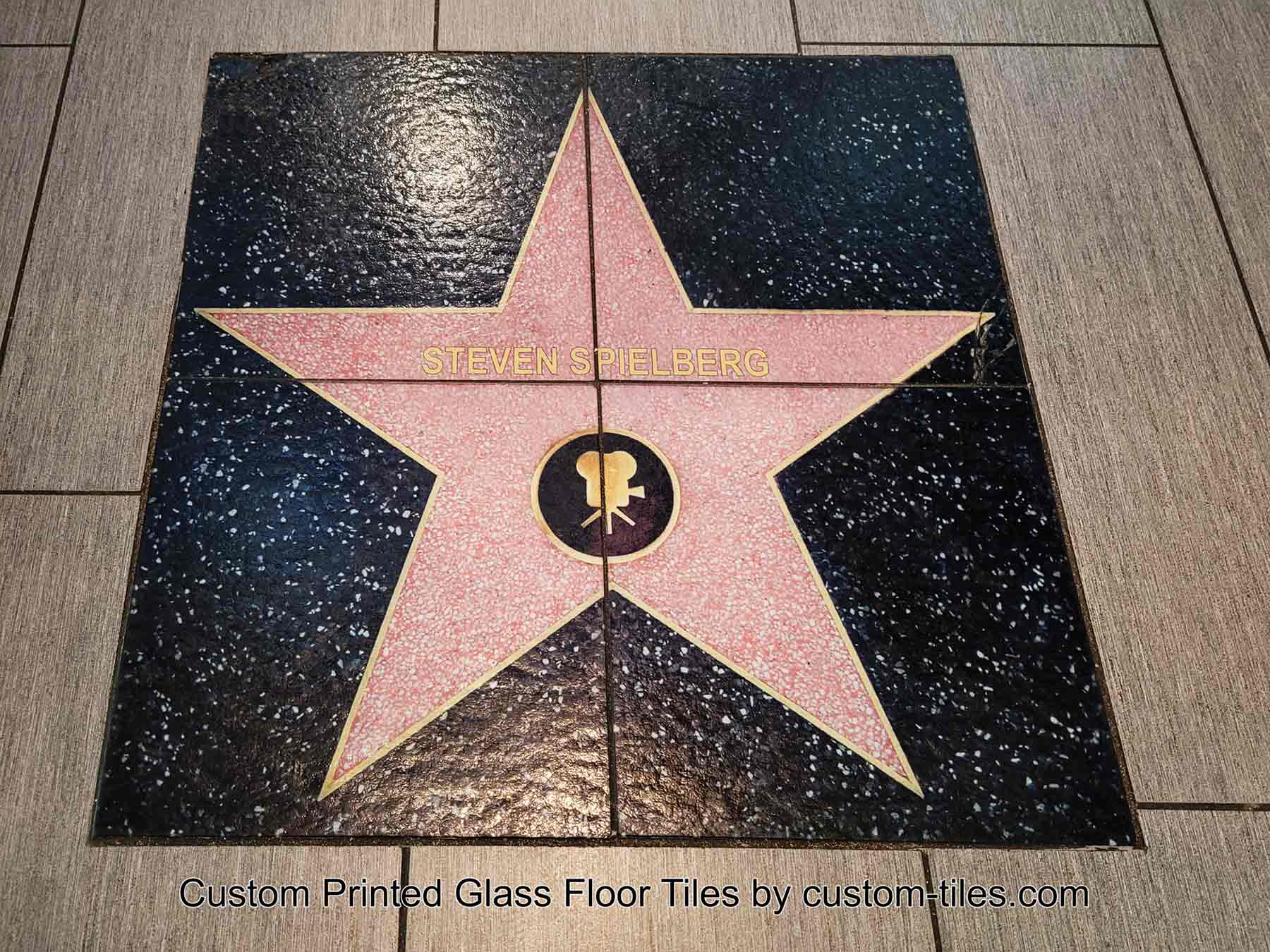Installing Glass Tile Murals and Flooring

GLASS TILE (Technical Specs are Below)
Glass tiles are not absorbent, like ceramic, thus different techniques are required to install glass tile. Testing performed by the Tile Council of America proved our textured glass floor tiles meet ANSI and ASTM standards for commercial wall and floor applications. Our glass tiles’ breaking strength surpasses floor standards by more than 700 percent. Both smooth and textured glass pass freeze-thaw testing, as well as resistance to chemical substances including household and commercial cleaning materials, swimming pool chemicals, hydrochloric acid solution and potassium hydroxide. The textured glass tile surface has a coefficient of friction that exceeds OSHA recommendations for non-slip safety. Scroll down this page for costs.
HOW TO INSTALL GLASS TILE
Epoxy adhesives provide the best results. Suggested products are Merkrete (Pro Epoxy Mortar and Grout), Custom Building Products (EBM-LITE™ PREMIUM EPOXY BONDING MORTAR) and Laticrete (Latapoxy 300). Follow the manufacturer’s recommendation for applying.
To insure vivid, uniform color for the image, use WHITE epoxy adhesive. Apply with a notched trowel per manufacturers’ recommendations. Also, apply a thin coat of the same adhesive to the back of the tile (‘back-buttering’). Then place tile and be sure to achieve full contact in the adhesive bed (especially for floor tiles, see why). We recommend using spacers between the tiles for uniform grout joints. Butting the tiles together without grout runs the risk of damaging the tiles if the substrate flexes due to temperature or humidity fluctuations or any other cause for movement.
Note: Handle glass tiles carefully to avoid scratching the imaged side. The white coating (which covers the image on the backside) can be scratched by metal tools and by other tiles.
GROUTING GLASS TILES
After the mural is installed and adhesive has cured to the manufacturer’s specifications, use a grout specifically formulated for glass tile (e.g., Polyblend® Non-Sanded Grout by Custom Building Products or Mapei’s Kerapoxy Stain-Free Grout). Epoxy grouts are waterproof and offer excellent stain resistance. Epoxy grouts are recommended for graffiti resistance and stain resistance.
After installation: clean thoroughly with a soft cloth or sponge, using glass cleaner, mineral spirits, or non-abrasive citrus cleaner to remove fingerprints and other soils.
Custom printed glass tiles require simple cleaning with products designed for glass. Use a soft, lint free cloth for cleaning. Never use abrasive cleaners or abrasive pads on glass tiles.
PERFORMANCE SPECIFICATIONS
Tile Council of America – Textured Glass Tile Testing Results:
1) ASTM C1026: Tiles showed NO evidence of freeze-thaw damage after completing 15 cycles of freeze-thaw.
2) ASTM C1028: Static coefficient of friction Dry = .86, Wet = .52
3) ASTM C373: Water absorption rate of .37% = impervious
4) ASTM C650: Resistance to chemical substances: Not affected by the following: Acetic acid 3% & 10%; Ammonium chloride, 100 g/L; Citric acid solution, 30 g/L &100 g/L; Lactic acid, 5%; Phosphoric acid, 10%; Sulfamic acid, 3% & 10%; Swimming Pool Chemicals = Sodium hypochlorite solution, 20 mg/L; Acids & Bases = Hydrochloric acid solution, 3% & 18%; Potassium hydroxide, 30 g/L & 100 g/L
5) ASTM C485: Warpage of Tile: Edge warpage: -.02%; Diagonal warpage: 0.00%
6) ASTM C499: Facial dimensions and thickness of tile: Average difference of 0.020”
7) ASTM C502: Wedging of Tile: Average percent wedging was 0.03%
8) ASTM C648: Average breaking strength is 1931 lbf
9) Mohs’ Scratch Hardness: 5 (~= knife blade)